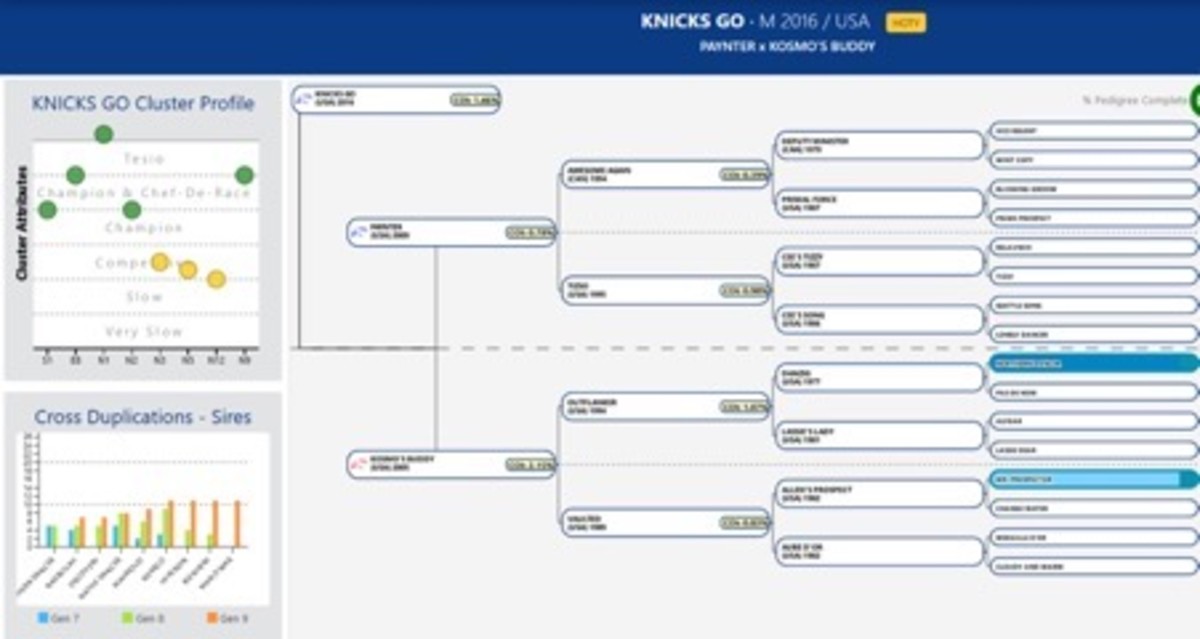A new software tool has been released which uses artificial intelligence and machine learning to analyze pedigrees and predict the likely success of matings to maximize a mare's potential.
The Pedigrees 360 software is the brainchild of Leo Tsatsaronis, who was the founder of G1 Goldmine, one of the most widely-used pedigree tools around the world.
“It really is a huge step forward in pedigree analysis and will give elite breeders and yearling buyers an extremely powerful tool in helping predict the likely outcome of a mating,” Tsatsaronis said. “Using AI and machine learning, the program has shown a very high degree of accuracy in predicting which pedigree combinations will produce the champions and which will produce the perennial maidens.”
In designing Pedigrees 360, Tsatsaronis included nine generations of pedigrees for thousands of horses, ranging from elite champions, down to the least successful runners, and tasked the software with finding the qualities that separate them.
While it is important to find the breeding combinations that work, Tsatsaronis noted that it's just as important to identify which mating patterns are unsuccessful; especially when those patterns involve fashionable pedigrees. Finding those problem patterns can help buyers avoid costly mistakes at auction, and help breeders avoid producing those horses in the first place.
One of the most exciting aspects of Pedigrees 360 is its ability to identify potential quality horses from matings deemed unfashionable by the commercial marketplace.
Knicks Go, North America's 2021 Horse Of the Year, is an example of what the software can find. Although the horse is the result of a mating involving a low-fee sire, and he sold for a low price at auction, Pedigrees 360 shows the mating had more potential than conventional wisdom might suggest.

The AI modeling analyzed 48 identifiable clusters within nine generations, with clusters being items such as counts of sire duplications, counts of sex-balanced mare duplications at seven, eight, and nine generations, and inbreeding positioning between generation.
It turned out that 40 of the 48 clusters were not significant, but eight clusters showed a clear difference between the “Champions” and the “Slow” sets and those eight clusters form the basis of the cluster chart.
Interestingly, the modeling identified that the eight significant clusters were different for colts and fillies. It is clear there are colt patterns and filly patterns, and that could explain why brothers and sisters often exhibit completely different racing ability.
“Obviously, there are always going to be horses which belie their pedigree,” Tsatsaronis said. “Some which the program suggest are going to be outstanding are actually slow and vice versa but so far these are proving to be a small percentage and maybe the result of some biomechanical factor rather than pedigree.”
“When most breeders and buyers are assessing a prospective mating or yearling, they take a variety of factors into consideration including, pedigree, conformation, x-rays and movement,” he continued. “Our program is just a tool to assist in one of those factors but it is a very powerful tool.”

Pedigrees 360 has already received positive reviews from North American breeders.
Hutton Goodman of Mount Brilliant Farm commented, “It's a very interesting tool that we are really starting to lean on, and the great thing about Leo's software is that you know he is going to keep sharpening it and updating it, making it more useful, like he did with G1 Goldmine. We have already started to see some of the great features he is developing to hopefully add and it is exciting stuff.”
For more information visit www.pedigrees360.com.
The post Pedigrees 360 Breeding Software Uses Artificial Intelligence To Plan Matings appeared first on Horse Racing News | Paulick Report.
